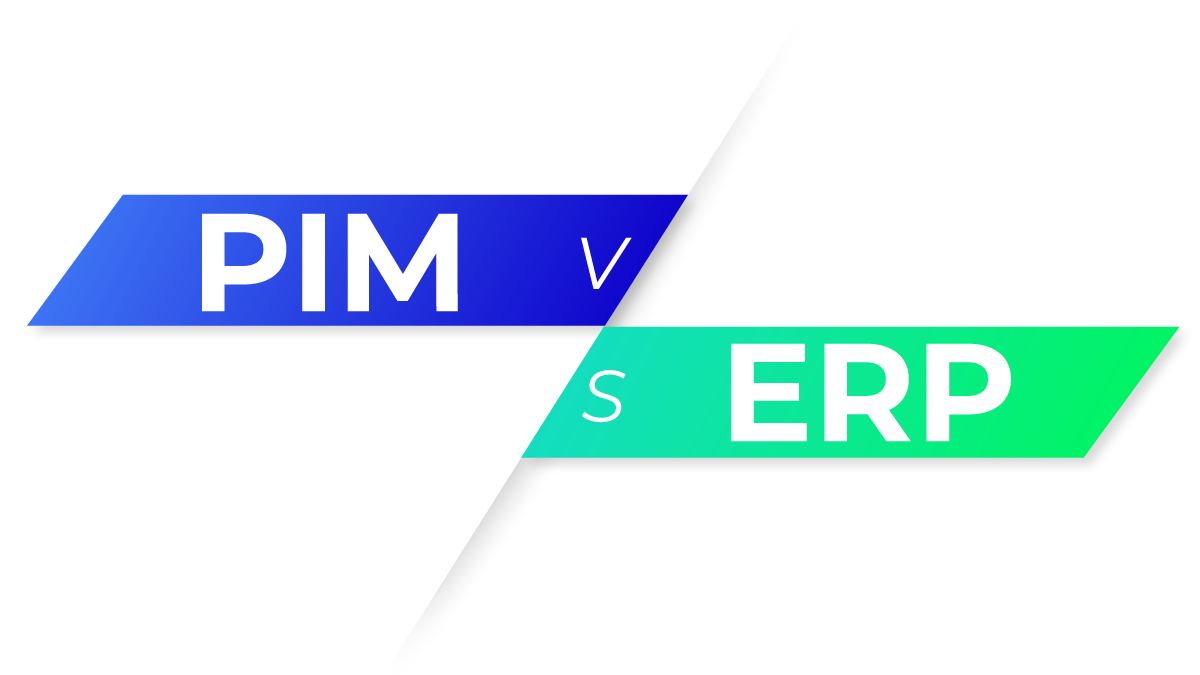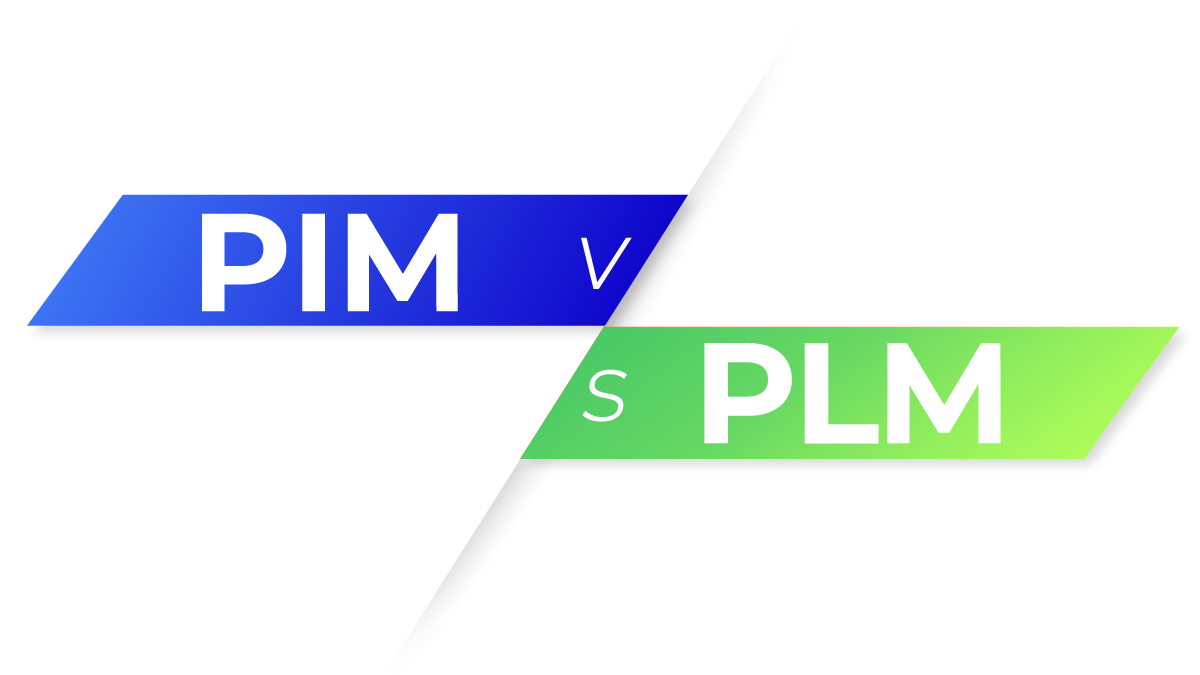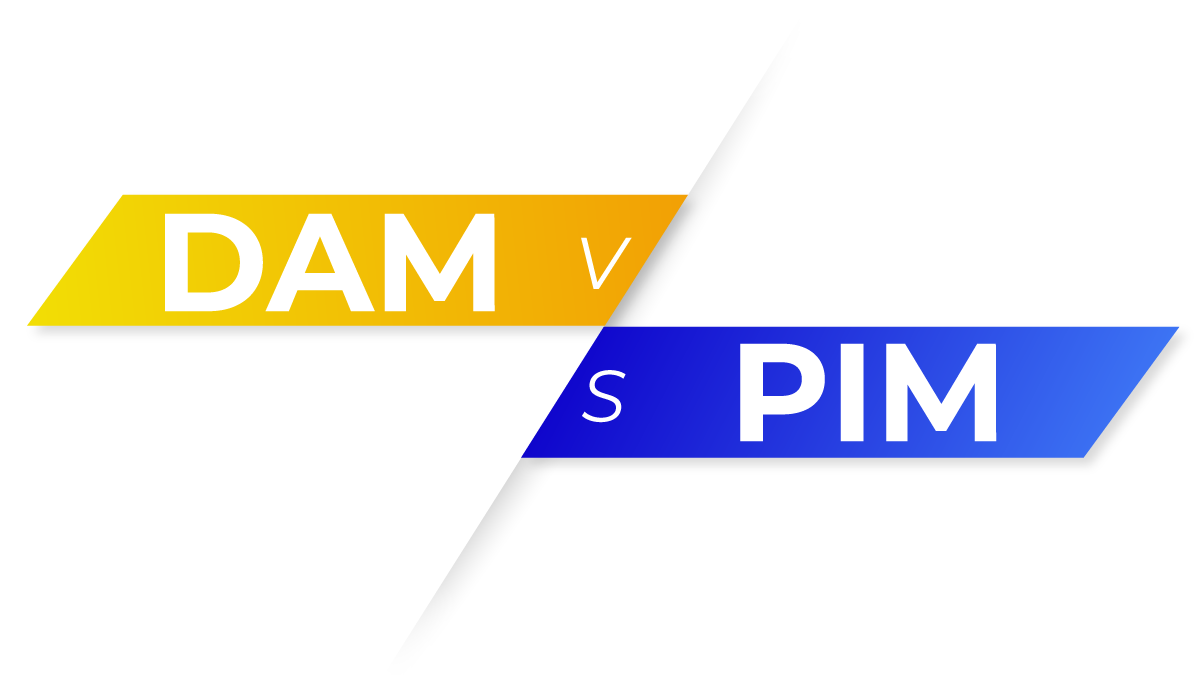8 Essential DAM Features in PIM for Marketers and Product Managers

Table of Contents
A single image can make or break a product launch. Inaccurate or inconsistent visuals across websites, catalogues, or marketplaces quickly erode trust. That’s why Digital Asset Management (DAM) is essential for marketers, designers, and product managers handling thousands of files daily.
When a digital asset management system is built directly into a Product Information Management (PIM) platform, businesses gain a single source of truth for both product data and brand assets.
This guide answers what is digital asset management, why it matters for enterprises, and highlights the 8 DAM features in PIM that teams love.
What Is Digital Asset Management (DAM)?
Digital Asset Management (DAM) is the process of centralising, organising, and distributing digital files such as:
-
Product images
-
Videos
-
PDFs and catalogues
-
Technical documents
-
Creative materials
A DAM system ensures brand consistency, protects files with permissions, and simplifies collaboration across global teams and external agencies.
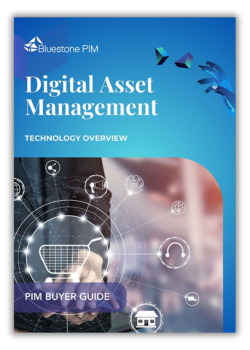
DOWNLOAD FREE E-BOOK
Digital Asset Management
Whether you're looking for a seamless PIM-integrated digital asset management solution, aiming to connect to an external DAM system or need headless capabilities, Bluestone PIM is the perfect choice to meet your specific needs.
How Digital Asset Management Benefits Teams
A well-designed digital asset management software brings measurable advantages:
-
Prevents chaos: one central library reduces errors, duplicates, and outdated assets.
-
Improves searchability: metadata tagging makes assets easier to find, even by search engines.
-
Boosts productivity: automation eliminates wasted time resizing or renaming files.
-
Ensures compliance: supports GDPR and consent management for images.
-
Scales with growth: cloud-based DAM scales storage and performance on demand.
Who Benefits Most from DAM in PIM?
-
Marketing teams: use branded images, videos, and catalogues in campaigns without duplication.
-
Product managers: link assets directly to SKUs and categories, creating one source of truth.
-
Designers & agencies: integrate with Adobe InDesign, CMS, or automation tools.
-
Video teams: manage large file formats and distribute them seamlessly across markets.
DAM in a PIM Platform
Instead of investing in a separate DAM system, many enterprises choose a PIM platform with built-in DAM features.
Why? Because product data and digital assets are tightly connected. With Bluestone PIM, images, videos, and documents are linked directly to product records, ensuring consistency across e-commerce platforms, print catalogues, marketplaces, and apps.
Integration options also exist: Bluestone PIM (built on MACH principles) connects seamlessly with external DAM systems via APIs and connectors. We offer out-of-the-box integrations with QBank, Tenovos, and Cloudinary, and we also provide our own External DAM extension.
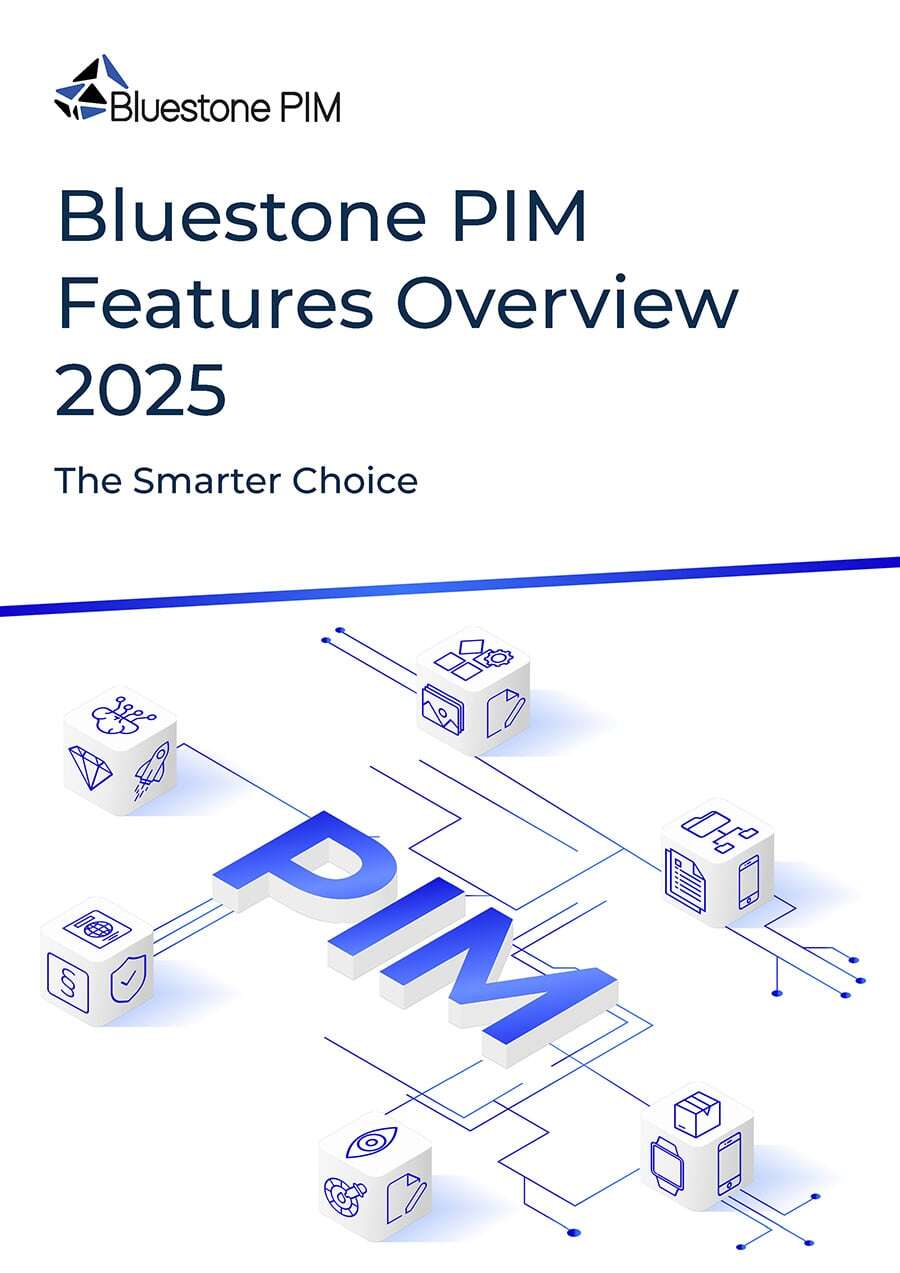
DOWNLOAD FREE E-BOOK
Bluestone PIM Features Overview 2025
A thriving e-commerce business relies on a flexible, composable architecture. Product data, the digital representation of every physical product, is essential for driving exceptional customer experiences.
8 Essential DAM Features in PIM
Modern PIM platforms like Bluestone PIM deliver key DAM capabilities that support product-driven businesses:
1
Image Management – store, filter, label, and manage multiple versions of images for omnichannel use.
2
PDF Generator – create branded catalogues or product sheets automatically from product data.
3
Scalable Cloud Storage – handle large volumes of product images and video in a multi-tenant SaaS environment.
4
Fast Access via CDN – distribute images globally with Amazon CloudFront CDN for instant load times.
5
Efficient Workflows – assign assets to products/categories, save shared views, and annotate internally.
6
Photographer Portal – allow agencies and freelancers to upload directly, removing Dropbox dependency.
7
Support for Multiple Formats – JPEG, PNG, WebP, SVG, AVIF, TIFF, plus 3D and video, and many more, via APIs.
8
Digital Asset Protection – granular permissions, scheduling, and publishing control to secure brand assets.

Differentiator:
Bluestone PIM’s DAM integrations go far beyond storage, as they’re tightly aligned with core PIM workflows. Assets respect access control and permissions, plug into personalised product editing and task management, and surface in productivity dashboards. AI-driven checks help find missing images and improve completeness scoring, while our File Processing Service partner, Blitline, adds Smart Cropping and image optimisation. The result is a seamless, secure, and measurable asset-to-product pipeline.
DAM in PIM vs Standalone DAM Software
|
Criteria |
Standalone Digital Asset Management System |
PIM with DAM Features |
|
Focus |
Enterprise-wide assets and creative workflows: brand/marketing campaigns, corporate libraries (HR, legal, training), creative production |
Product-centric assets tied directly to SKUs/variants and channels to support enrichment and commerce readiness |
|
Best for |
Marketing agencies, brand studios |
Retailers, e-commerce, distributors, s]and manufacturers focused on linking assets to product data and publishing faster |
|
Strengths |
Advanced editing, brand portals, creative workflow automation |
Single source of truth for product + assets, faster syndication |
|
Limitations |
Requires integration with PIM/commerce systems to link assets to product data and publish |
May need external DAM integration for non-product libraries or specialised creative workflows |
The Power of APIs and Integration
API-first PIM platforms like Bluestone PIM expand DAM capabilities beyond core features:
-
Resize, crop, blur, or convert assets on demand
-
Connect seamlessly with InDesign, CMS, and e-commerce platforms
-
Syndicate assets across global channels with automation
This makes DAM in PIM not just a storage solution, but a composable building block in a broader commerce ecosystem.
Choosing the Right Digital Asset Management Approach
The best digital asset management strategy depends on your needs:
-
Standalone DAM: best if your organisation’s main challenge is managing complex creative workflows.
-
PIM with DAM: best if your challenge is linking product data with digital assets for omnichannel commerce.
Want to see how Bluestone PIM unites digital asset management and product data in one composable platform?
Book a free demo or talk to our experts today
We’ll help you explore whether you need a standalone DAM software or an integrated PIM with DAM capabilities to best support your product content strategy.


